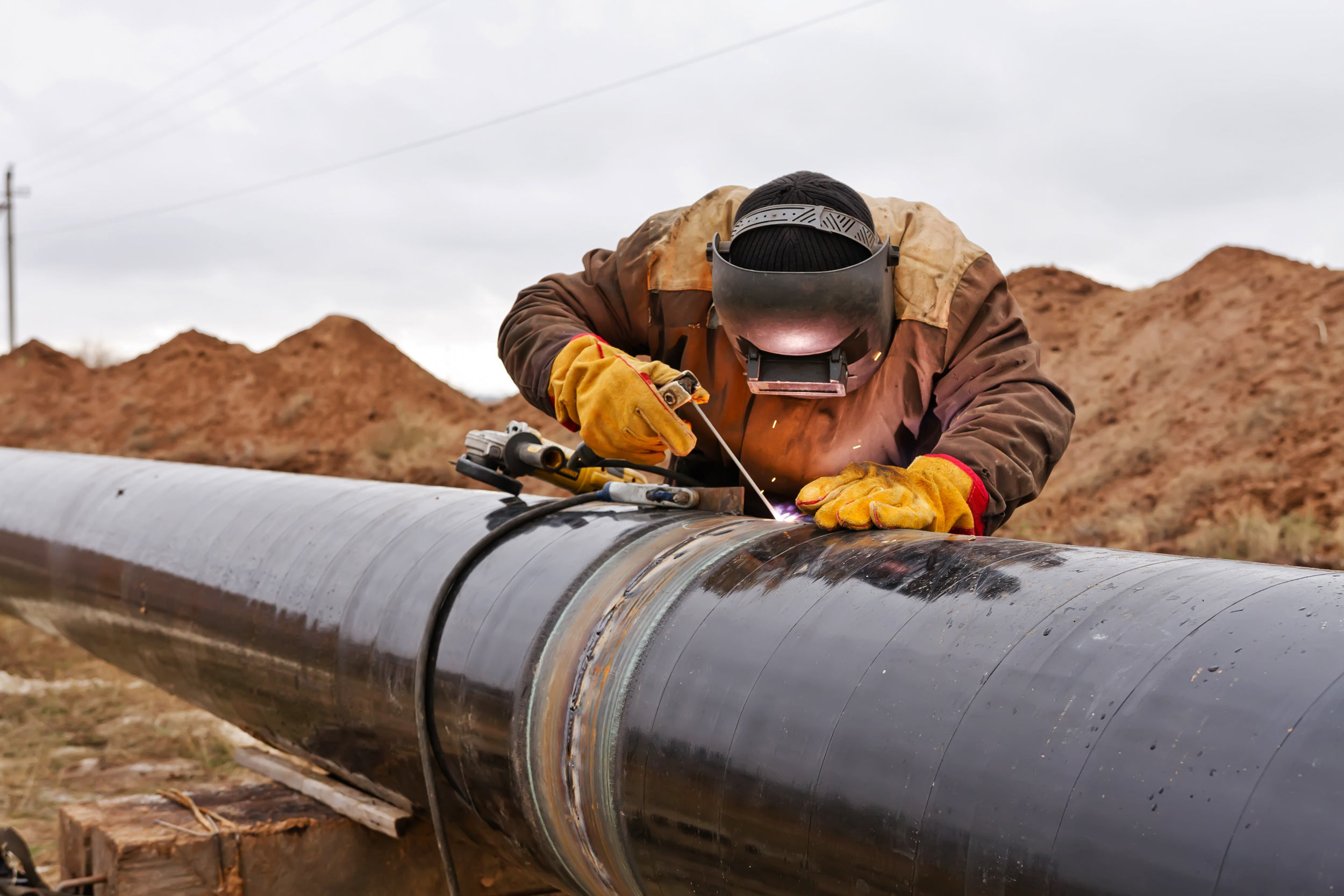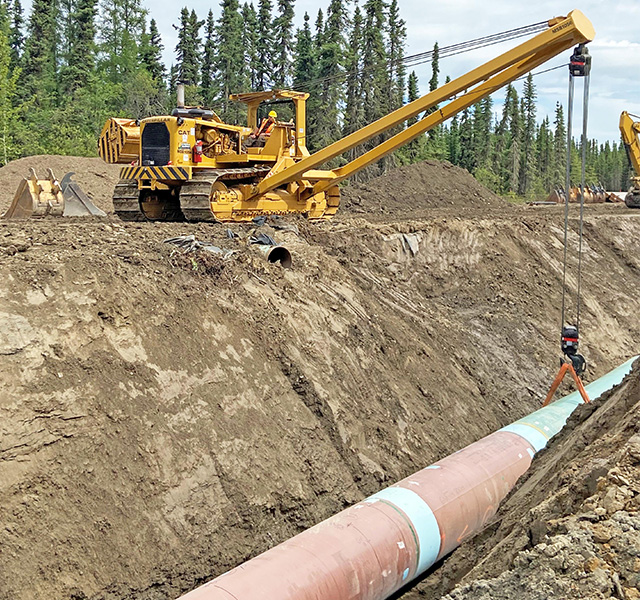Best Practices for Safer Pipe Joining by Creek Pipe roustabout Crews
The Relevance of Pipeline Construction: Checking Out the Solutions Provided in the Industry
Pipeline construction is a vital component of modern-day infrastructure. It facilitates the transportation of essential sources like oil, gas, and water. The market includes different solutions, consisting of planning, website prep work, and installation. Each phase calls for accuracy and adherence to security criteria. As areas rely on these systems for their resources, understanding the intricacies of pipeline construction exposes its significance and possible obstacles. What factors affect the success of these jobs?
Introduction of Pipeline Construction Providers
Pipeline construction services encompass an array of specialized tasks developed to assist in the setup of pipelines for transferring different compounds, including oil, gas, and water. These solutions usually consist of site prep work, excavation, installation of pipeline segments, and backfilling. Knowledgeable labor and advanced tools are basic for guaranteeing each stage is implemented with accuracy and safety.Safety procedures are paramount, as these jobs often include collaborating with dangerous products and in challenging settings. Quality assurance actions identify that the pipes fulfill market standards and guidelines. In addition, the solutions might include trenchless technology, which minimizes surface disruption.Environmental factors to consider play a substantial function in pipeline construction, needing analyses and reductions to safeguard surrounding ecological communities. Overall, pipeline construction services are important for developing the framework essential for power and water distribution, supporting both economic development and social needs.
Planning and Layout in Pipeline Projects
Effective preparation and layout are crucial elements of successful pipeline projects, making certain that all elements are diligently attended to prior to construction starts. This phase involves thorough expediency research studies that evaluate the technical, financial, and environmental aspects influencing the task. Engineers and developers work together to create in-depth plans that lay out the pipeline course, materials, and construction techniques, straightening with regulative requirements and market standards.Advanced software and modeling methods are often employed to replicate different scenarios, enhancing the layout for efficiency and safety. Environmental impact analyses are conducted to mitigate prospective harm to ecological communities and communities, showing a dedication to lasting practices. Additionally, stakeholder engagement is vital, promoting communication and attending to worries from influenced parties. Ultimately, effective preparation and layout set the structure for a pipeline project, lessening threats and ensuring a streamlined construction process, eventually adding to the total success of the procedure.
Website Prep Work and Excavation
Detailed website preparation and excavation are vital actions in the pipeline construction procedure. This stage includes a detailed evaluation of the land where the pipe will be mounted. Project groups perform surveys to identify soil types, topography, and existing energy lines to guarantee a secure and efficient excavation. Proper site preparation lessens ecological effect and facilitates smoother construction operations.Excavation complies with, where heavy machinery is employed to eliminate dirt and rock, creating a trench that fulfills the defined depth and width for the pipe. This procedure needs to comply with safety regulations and ecological guidelines to stop damages to bordering ecosystems.Additionally, disintegration control measures are executed to stabilize the website during and after excavation. Effective site prep work and excavation add considerably to the general success of pipe jobs, laying a solid foundation for the subsequent phases of construction.
Pipeline Installation Techniques
Pipeline installation strategies are vital for the effective execution of framework tasks. 2 noticeable approaches consist of trenchless modern technology, which decreases surface area disturbance, and the open-cut excavation procedure, understood for its simple method. Each technique provides distinctive benefits and considerations relying on task needs and ecological variables.
Trenchless Innovation Approaches
While traditional methods of pipeline installation commonly include considerable excavation, trenchless innovation approaches provide an extra effective and eco friendly choice. These innovative methods, such as horizontal directional exploration and pipeline bursting, lessen surface disruption by enabling the setup of pipelines without considerable digging. This not only lowers the environmental impact yet additionally greatly cuts down on labor and remediation expenses. Trenchless techniques promote the setup of pipes in city areas where typical excavation would certainly be unwise or harmful to existing infrastructure. In addition, these methods can suit different soil kinds and problems, making them versatile services for pipe construction. Inevitably, trenchless modern technology stands for a considerable development in the pipe industry, advertising sustainability and functional efficiency.

Open-Cut Excavation Process
Open-cut excavation continues to be an essential strategy in pipeline installation, characterized by the straight excavation of a trench to lay pipes. This method includes removing soil and various other products to develop a trench of sufficient depth and width, allowing for the placement of pipes at the required quality. Open-cut excavation is usually favored for its cost-effectiveness and simpleness, especially in locations with secure dirt conditions. It can interrupt surface activities and requires careful preparation to take care of website traffic and ecological impacts. Precaution should be executed to safeguard workers and nearby facilities throughout the excavation procedure. Overall, while open-cut excavation might not appropriate for all surfaces, it remains an extensively utilized technique in pipe construction.
Evaluating and High Quality Guarantee
Checking and high quality guarantee are crucial elements in pipeline construction, making certain that installations fulfill established safety and security criteria and performance demands. Various evaluation techniques and methods are employed to analyze worldly quality and adherence to governing conformity. This organized approach helps identify potential concerns prior to they rise, guarding the stability of the pipeline system.

Assessment Techniques and Techniques
Evaluation strategies and techniques are vital parts in guaranteeing the stability and safety and security of pipe construction. Various methods, including visual examinations, ultrasonic testing, and radiographic evaluations, are employed to identify defects and confirm top quality. Visual examinations enable for the recognition of surface area abnormalities, while ultrasonic testing makes use of sound waves to analyze wall thickness and locate problems internally. Radiographic assessments involve X-rays or gamma rays to create pictures of the pipeline's structure, revealing hidden issues. Furthermore, stress screening is conducted to evaluate the pipeline's honesty under operational problems. These approaches collectively add to a comprehensive understanding of the pipe's condition, allowing prompt upkeep decisions and guaranteeing compliance with market criteria. Reliable evaluation is vital for protecting against failings and promoting lasting operational safety.
Safety And Security Standards Compliance
Ensuring conformity with safety and security standards is critical in pipeline construction, as it straight influences the job's general high quality and integrity. Sticking to established regulations and guidelines guarantees that construction practices minimize threats connected with pipeline installment and procedure. Creek Pipe trenching services. Rigorous screening protocols, consisting of non-destructive screening and pressure evaluations, are vital in validating that pipes can stand up to the operational tensions they will encounter. Quality assurance construction equipment leasing measures are additionally important, as they develop a structure for regular tracking and evaluation throughout the construction procedure. By focusing on safety and security requirements conformity, companies not just safeguard employees and the environment however also improve the integrity of the pipe, ultimately bring about lasting functional success and public trust in the facilities
Material Top Quality Examination
Material top quality examination plays a significant role in the general stability of pipeline construction. This procedure entails strenuous screening and high quality assurance actions to guarantee that products satisfy industry standards and specs. Numerous examinations, consisting of tensile strength, corrosion resistance, and weld honesty evaluations, are performed to determine any type of prospective weaknesses. A complete analysis not only guarantees the efficiency of the pipe yet also enhances safety and longevity over its life-span. Additionally, implementing quality assurance methods aids minimize threats linked with material failures, which can result in pricey repair work and environmental hazards. By prioritizing material high quality evaluation, business can ensure compliance with regulatory demands while fostering self-confidence amongst stakeholders in the dependability of their pipe systems.
Upkeep and Fixing Services
Repair and maintenance services play a crucial role in the durability and performance of pipe systems. These solutions encompass regular evaluations, troubleshooting, and restorative actions to address damage, leaks, and various other issues that might emerge over time. Experienced technicians make use of innovative modern technologies such as ultrasonic screening and clever pigging to keep an eye on pipe stability, guaranteeing that any possible issues are recognized early.Additionally, maintenance programs typically consist of arranged safety nets designed to boost system dependability and reduce the likelihood of unexpected failings. Repair solutions may entail the substitute of broken areas, sealing leaks, or using trenchless innovation for minimal disruption.
Environmental Conformity and Safety Steps
Pipeline systems not only need recurring upkeep and repair to operate successfully but likewise have water pipe installation to comply with rigid ecological compliance and safety and security steps. These laws are vital for reducing ecological influence and making sure public safety and security. Business in the pipeline construction market apply detailed ecological evaluations before project initiation, identifying possible risks to wild animals and ecosystems.Furthermore, adherence to safety methods shields employees and surrounding neighborhoods. This includes regular training on emergency situation response and spill prevention techniques.To keep compliance, sectors make use of checking technologies to detect leaks and various other abnormalities in real-time. Ecological management plans are usually created to lay out steps for resolving unexpected problems during construction.Ultimately, rigorous adherence to environmental compliance and safety and security actions not just meets lawful obligations however also fosters sustainable methods within the market, advertising a balance in between facilities advancement and ecological stewardship.
Regularly Asked Concerns
What Career Opportunities Are Readily Available in Pipeline Construction?
Occupation chances in pipe construction incorporate roles such as project managers, engineers, welders, and safety inspectors. These settings call for diverse skills, offering pathways for development in an important field of facilities advancement and power circulation.

How Do Pipeline Projects Impact Local Communities?
Pipeline projects considerably influence neighborhood communities by influencing economic growth, giving work chances, and boosting facilities. They might additionally elevate worries concerning environmental effects, land usage, and possible interruptions to area cohesion and natural ecological communities.
What Innovation Is Used in Modern Pipeline Construction?
Modern pipeline construction uses innovative modern technologies such as GIS for mapping, drones for airborne studies, and automated used construction equipment near me welding systems to enhance performance, safety and security, and accuracy, inevitably promoting the effective transportation of resources throughout numerous surfaces. Creek Pipe Midland.
Just How Are Pipeline Construction Prices Estimated?
Pipeline construction prices are estimated with detailed assessments of materials, labor, equipment, and regulative demands. Factors like terrain, job dimension, and environmental considerations likewise considerably affect the general budget and financial planning for construction.
What Are the Largest Challenges in Pipeline Construction Projects?
The greatest difficulties in pipeline construction jobs include regulative compliance, ecological worries, logistical concerns, protecting financing, and managing labor shortages. Each variable can significantly influence timelines and budgets, complicating the general implementation of the task.